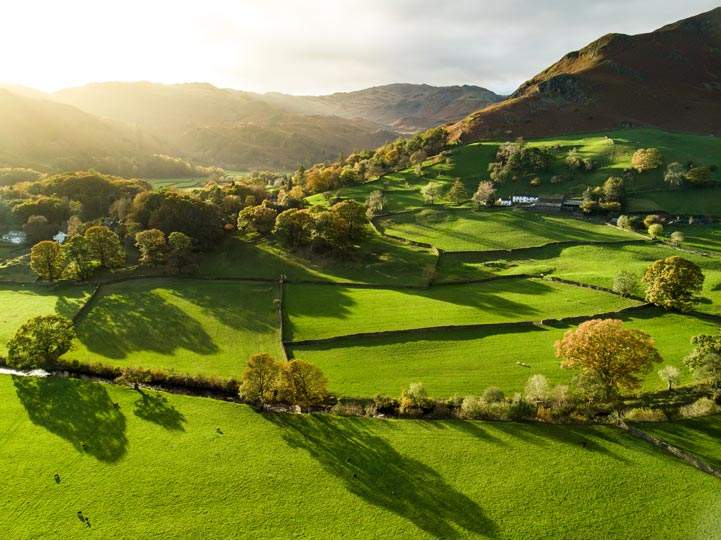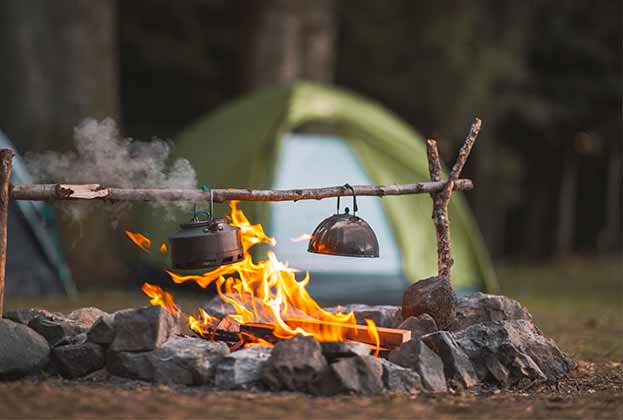The Savills Virtual Estate provides a useful roadmap that highlights the key issues and actions you will need to look at on your diversification journey
Using the Savills Virtual Estate, we have mapped out a typical diversification journey that explores a range of alternative rural enterprises and uses our own experience from across the business. We highlight what to expect when considering a diversification as well as key issues and actions to consider.
Step 1: Why diversify?
Reasons to diversify are varied and range from a wish to improve the tax efficiency of a business to a heartfelt desire to explore a specific interest and bring it to the local community. A landowner may wish to explore a new opportunity as part of generational change, subsidy change, or any number of things in between. Whatever the reasons, prospective rural entrepreneurs should be sure they are the correct reasons. A diversification cannot compensate for an underperforming core business and may, in fact, worsen the situation by diverting resources.
A high-level options appraisal of the site, location and its assets is key to starting the decision-making process and will give an initial insight on where to focus further investigations
Nicola Buckingham, Associate Director, Rural Research
Step 2: High-level options appraisal
A high-level options appraisal of the site, location and its assets is key to starting the decision-making process and will give an initial insight on where to focus further investigations. An initial investigation of factors such as location and access, pre-existing facilities and buildings and local markets will quickly establish which opportunities are plausible and which are not.
Step 3: Feasibility study
Following the initial sift from the appraisal, looking into the feasibility of remaining options is the crucial next stage. A detailed feasibility study will narrow down the options to those that are most viable based on numerous factors, including:
- Market demand and competition
- Capital costs against funding availability
- Target audiences and complementary marketing channels
- Potential staff resources
- Income, profitability and ROI
Step 4: Final selection
The high-level appraisal and feasibility study will highlight the most suitable diversification choices for the farm or estate and yourself. We recommend selecting one business idea to focus on. Keep any other potential enterprises in mind for any further diversifications in the future.
Savills Virtual Estate: New Business Opportunities
The Savills Virtual Estate
The Savills Virtual Estate is a traditional 6,000-acre rural estate in Northumberland centred around a Georgian mansion. In addition to landscaped gardens and moors, the Estate comprises 200 acres of parkland that contains a large secluded lake surrounded by woodland. The remainder of the land is a variety of farmed landscapes, including uplands and a mix of topographies. There are a number of used and redundant farm buildings with good access to main roads, as well as numerous let cottages across the Estate.

The Estate planned to expand their offer and create additional income by exploring diversification options. Market trends – accelerated as a result of Covid-19 – such as the interest in experiences, sustainability and well-being were considered during the planning stages.
Step 1: Why
As a result of diversification plans stalling during 2020, the Estate were keen to move forward with the project during 2021. There were three key drivers behind this:
- Growing opportunities in new markets following the pandemic, specifically staycations and a move towards localism.
- A desire to provide wellness opportunities, both as a consequence of Covid-19 and as an ethos of the Estate.
- The Estate has wanted to redevelop the redundant buildings for many years and was keen to explore the finances.
So they drew up a long list of diversification opportunities that could be explored to find the best option for them.
Step 2: Options
From the initial options appraisal, the Estate decided that without any specific interest or passion from the team, any animal-related project was not viable. A farm shop or café was also not viable due to local competition and capital constraints. However, the Estate was keen to consider alternative food service options due to heightened interest in local food during the pandemic.
The Estate made a decision at this stage to concentrate on providing some sort of tourist accommodation, possibly using the redundant buildings or making use of the lake for recreation, water sports or fitness options to cater for increased demand for positive well-being experiences.
Step 3: Feasibility
Having engaged with third party water sports providers, it was deemed that the lake was too small and inaccessible to make this possible. This option was therefore dismissed.
The Estate’s passion to redevelop some of the redundant buildings to offer accommodation was also investigated. An architect and surveyor provided costs to convert some of them into holiday cottages. However, this showed that the conversion costs were very high, funding for rural buildings conversion has dried up and a more detailed study showed there was a higher level of competitive holiday cottage accommodation in the surrounding area than the Estate has thought.
Keen to harness the market demand for staycations but without the holiday cottages as an option, the Estate made the decision to focus on opening a camping site. Their location near a national footpath route added footfall and market demand, while collaboration with nearby businesses to provide local food would create a unique and sustainable offering.
Step 4: The diversification
The Estate discovered a change in permitted development specifically for campsites. In response to Covid-19, this allowed land to be used for campsites without having to submit a planning application and it allowed them to open for up to 56 days per year (eight weeks), up from a previous 28 days (four weeks). This made the campsite option more viable in relation to the capital investment needed.
They decided to use this opportunity to set up a new campsite for eight weeks of the summer. With a strong ethos for sustainable tourism, the Estate decided to focus on creating a wild and natural campsite.
Thinking through the options

Virtual Estate accommodation vision
- A wild and natural tent campsite.
- Pitches are to be spacious and so 40 sites will be created; only 5% of the 900 that research indicated would be possible.
- All structures to be made with wood from the Estate to promote sustainability.
- Market research shows a demand for wild camping experiences with compost toilets and cold showers among the woodland.
- Pre-bookable meat boxes and bakery hampers from local suppliers will be offered.
- Firepits, firewood from the Estate and marshmallows will be provided on arrival for an authentic, cosy and unique fireside experience.

Potential funding streams
The UK Shared Prosperity Fund is due in April 2022 and is the most likely source of future tourism-based funding. However, alternative funding options are still available for those eager to diversify:
- Record low interest rates make bank borrowing very attractive at present.
- Record low interest rates also make traditional savings accounts particularly unattractive. Those diversifying may wish to consider investing some savings into their latest venture where yields may ultimately be better.
- Localised grant schemes such as Farming in Protected Landscapes (FiPL) still exist in particular locations. Consult local agencies and organisations to avoid missing out.

Marketing tools
- Local press If an offering is new to the area or has unique, never-before-seen characteristics, it will make for an ideal local news story.
- Social media Free and with the potential for national, even global reach, social media is a powerful tool. To increase your reach, make sure you have a variety of platforms for different audiences.
- Existing customer base A poster, an email, even a simple conversation. There is an endless number of ways to let an existing customer base know about a new offering from the local business they already know and trust.
- Signage To catch the eye of those passing by, ensure signage is appropriate. A large, simple sign in a safe location is best for those passing by in vehicles, but a smaller, more informative sign will prove more successful for walkers.
Read the articles within Spotlight: Rural Diversification below.
.jpg)

